X-RAY EXAMINATION
Do you own a valuable painting? Perhaps it is what you do not see which makes it valuable.
X-ray use has become a common practice among art authenticators. Not only does it unlock secrets underneath paintings, but it helps to establish authenticity. Types of paper, materials, preparatory sketches, changes to the composition, and other clues can be discovered through the use of an x-ray to prove the nature and origin of a painting.
X-rays can also be used to detect traces of minerals and other elements within the paint. These traces can be clues to when the painting was executed and where. For example, this x-ray of Vermeer's "The Girl With a Pearl Earring" reveals that there were traces of lead in the paint that he used.
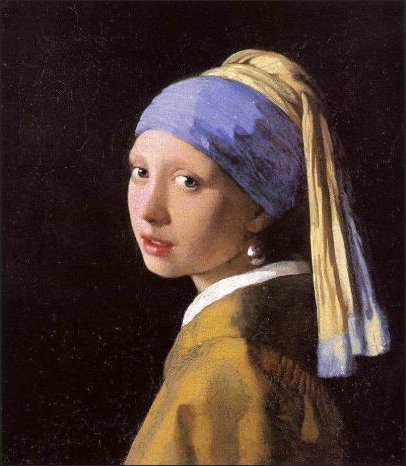 |
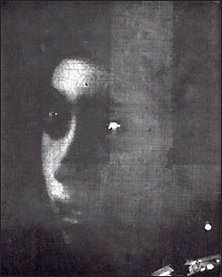 |
| Vermeer, Girl with a Pearl Earring | Vermeer, Girl with a Pearl Earring x-ray |
During Vermeer's day, lead was a primary component in white paint. These brighter areas on the x-ray show where Vermeer used white, therefore creating the luminous glow that this picture has become famous for. Even though this is unmistakably a Vermeer, this specific applied technique confirms the painting was produced at the time when lead was in use.
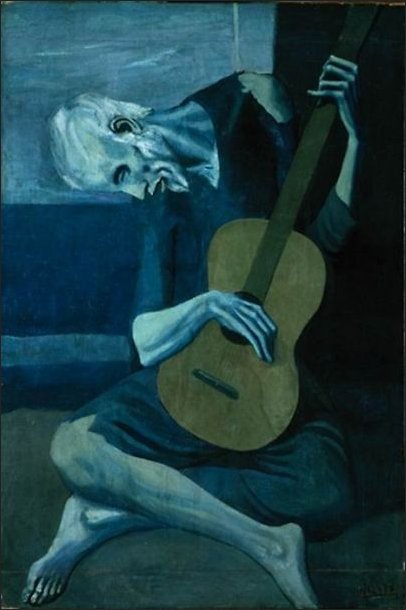 |
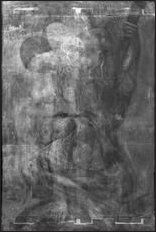 |
Another example where x-ray research was used on a famous painting was Pablo Picasso's "The Old Guitarist" (1903). Through x-ray research, it was revealed that this painting initially started as an old woman with her head bent over. X-rays also reveal a cow's head in the top right corner.
While Ultra-Violet examinations can be done in-house; heavy duty x-ray photography must be done at the laboratory level.
Art authenticators have been using x-rays to identify and authenticate paintings for more than 100 years. The first documented use of x-rays in art authentication was in 1896 in Frankfurt, Germany.
So how do x-rays work in the art authentication world? It's actually a simple process.
If you have ever had an x-ray performed at the doctor's office, you already have a basic understanding of how they work; x-rays are used to see different layers in your body that can't be seen by the naked eye.
There are two types of x-rays used in art authentication: stereoradiography which operates the same way as medical x-rays, and autoradiography which uses beta particles. Each type of x-ray can show different things in a painting that would otherwise not be seen.
Like at your doctor's office, x-rays can see through different layers. But instead of flesh, these x-rays see different layers of paint. X-rays can show where touch-ups have been made, or where places were painted over.
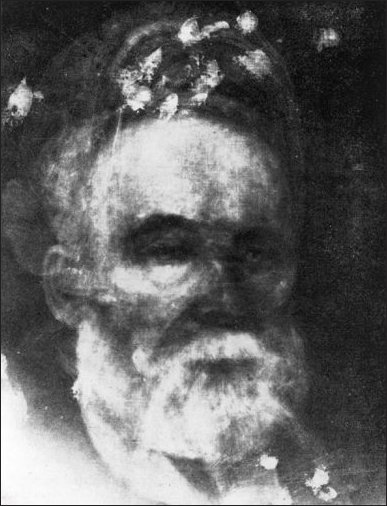
n order to create a new picture of the layers of the painting, the rays pass through the painting and create a negative of the darker areas on film. Think of it as reversed photography. After the rays are passed through the painting, old layers of paint can be seen and the investigation can begin. Is this consistent with the known preparation and painting method of the artist? Are the hidden compositions similar to the style that the artist used?
In order to find these "hidden paintings", the x-ray technician will apply a certain amount of kilovoltage. The kilovoltage is basically a measurement of how intense or weak the x-ray beam is. The more kilovoltage is applied, the more it reveals of the paintings underneath. It can be compared to changing the contrast on a television set when it goes from white to black. The more kilovoltage that is used, the better you can see the picture underneath. It has been said that kilovoltage is used by the radiographer to "paint" the picture (Graham and Eddie).
Time is also an element that radiographers use to make x-ray exposures. In the same way that you can under or over expose film in a camera, the same can be said for x-rays. Radiographers use a short x-ray exposure to show the deepest layers. The longer the exposure, the shallower the x-ray will be.
Generally, art laboratories use a series of "soft" x-rays known as the grenz rays. These wavelengths are long, but less intense, and are ideal for art authenticators. To produce these grenz rays, and to use them in a way that is convenient for authenticators, typically a machine like the Gilardoni Radiolite x-ray machine is used.

Radiographers must stand very far away when conducting x-rays with this machine, due to the possible radiation exposure.
Amazing things can be seen with the x-ray technique. For example, this painting "A Spanish Grandee" by El Greco shows that underneath the painting of this aristocrat is a layer showing a portion of a still life.
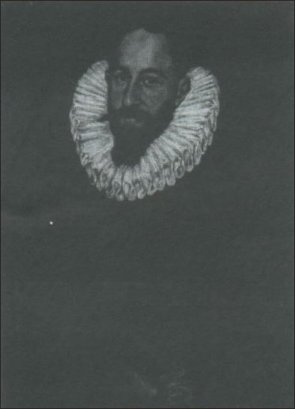 |
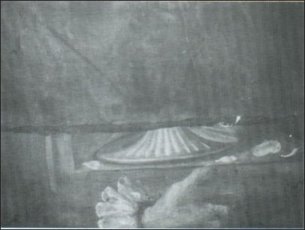 |
| El Greco, A Spanish Grandee | Scan of A Spanish Grandee |
The same can be said of this painting, "Tobias and the Angel" by Rembrandt. What we see as a landscape was originally a portrait of a man.
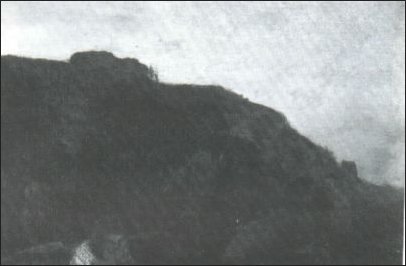 |
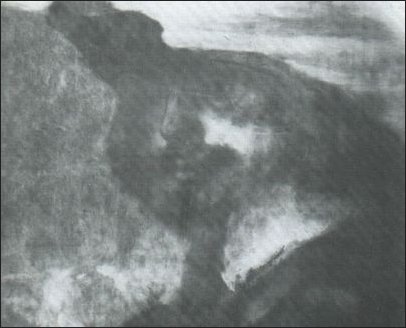 |
| Rembrandt, Tobias and the Angel | Scan of Tobias and the Angel |
Through a combination of Morellian analysis, documentary research and x-ray examinations, authenticators can determine if a painting is the genuine article. For example, it is well-known that most artists would recycle their canvases. Painting over a rejected picture was a common practice. Red flags would go up for an art authenticator if there were no sketches, modifications (pentimenti), or anything at all below the surface of a painting. Some painters though, did not prepare a sketch. In general, however, a perfect composition may indicate that the painting is a duplicate or a copy.
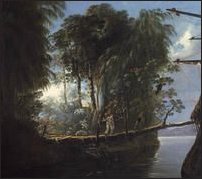 |
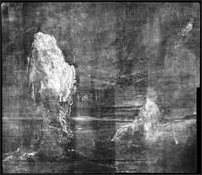 |
X-ray comparison of "A View of Picksgrill Harbor, Dusky Bay" by Hodges, shows a completely different landscape underneath. The original is of icebergs, and the surface painting is a different climate.
An educated authenticator with a very trained eye can distinguish styles and methods with the use of x-rays.
They are especially useful for examining paintings on panel (wood).
From x-rays and other forensic technology to systematic comparative analysis, to archival research, we use all the tools and methods available to authenticate paintings.
